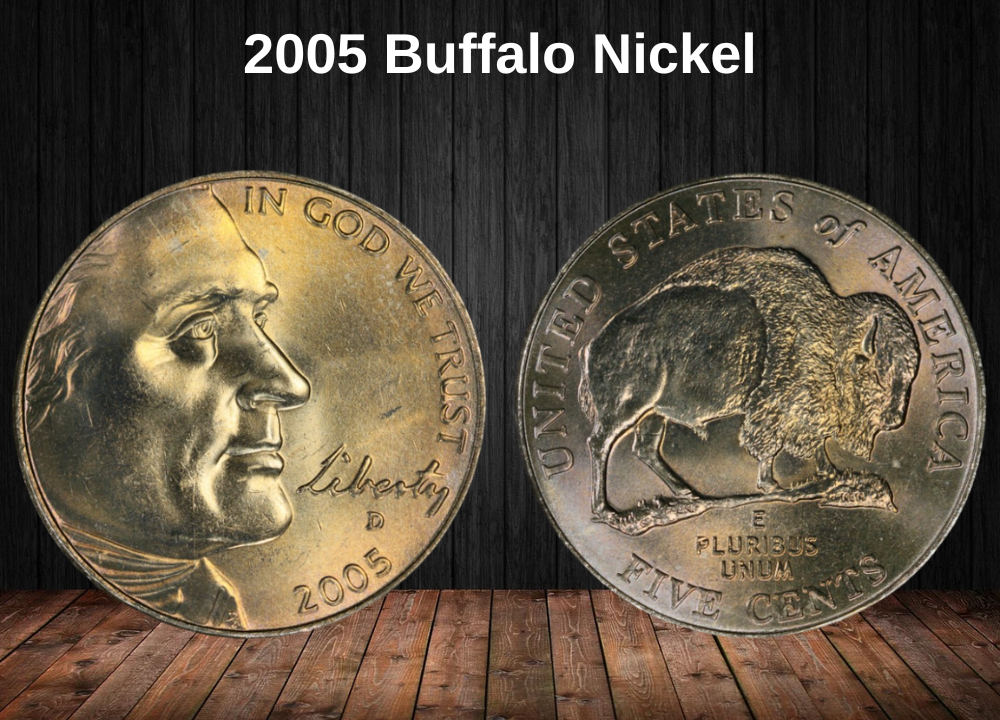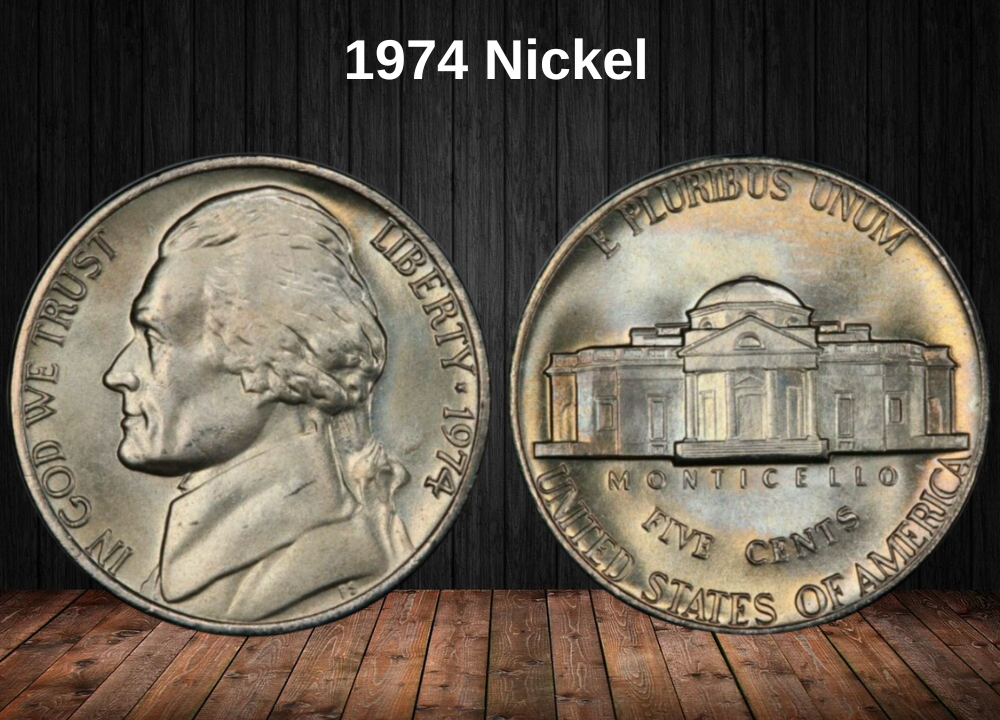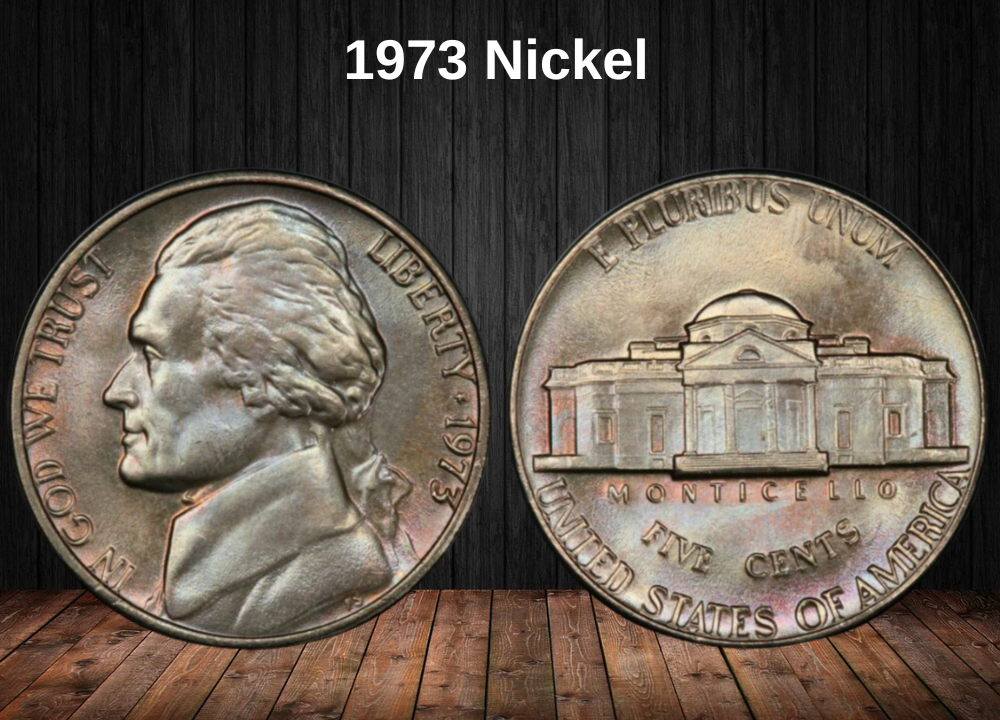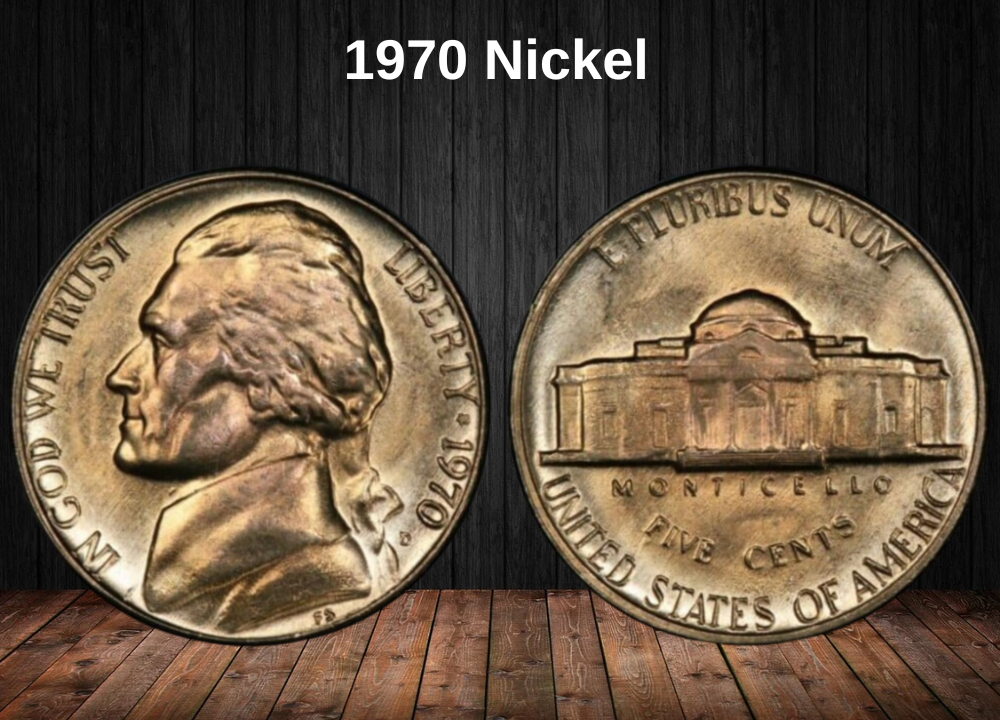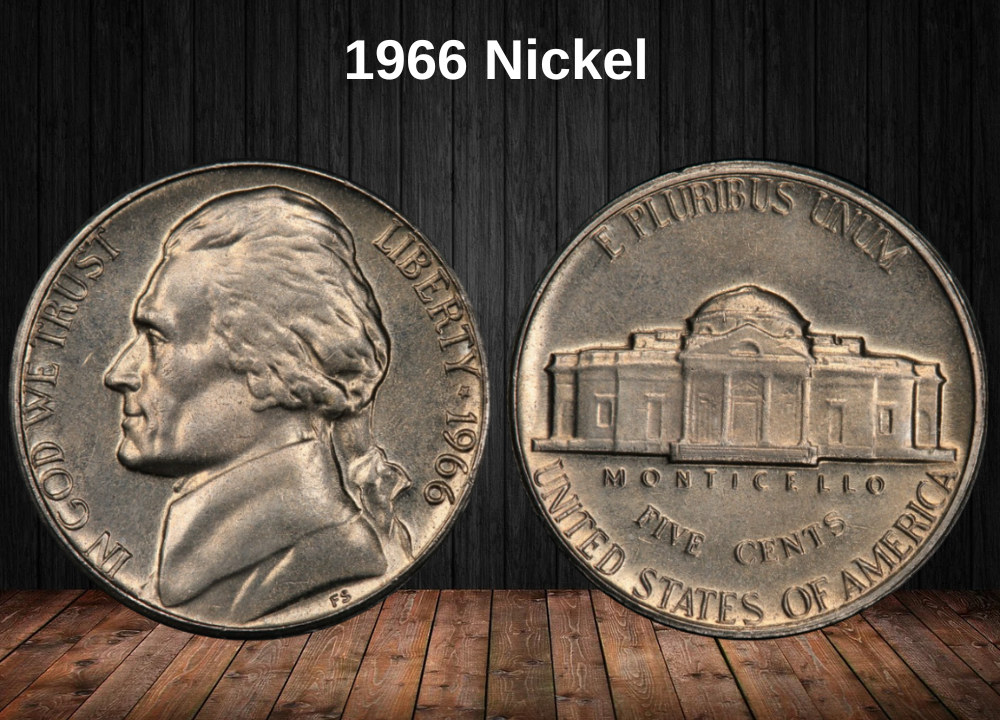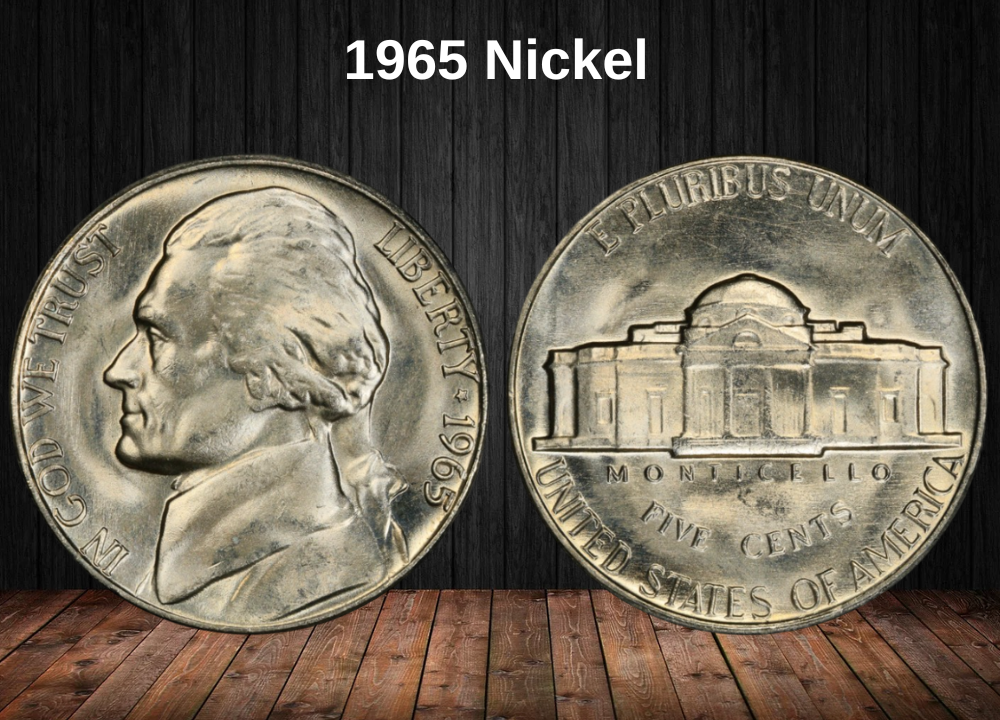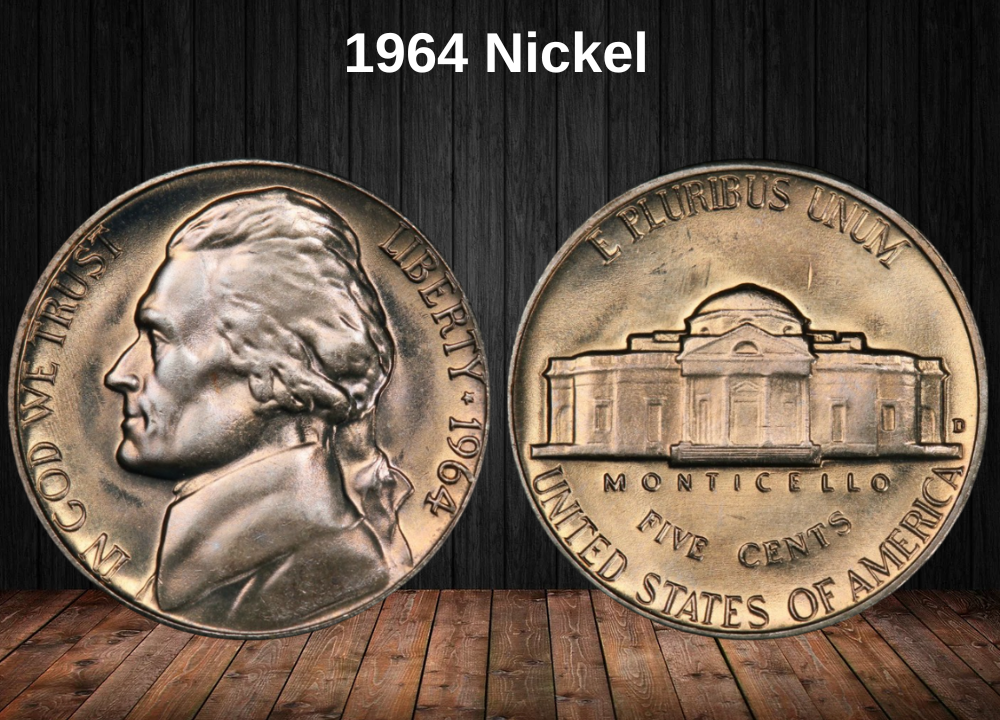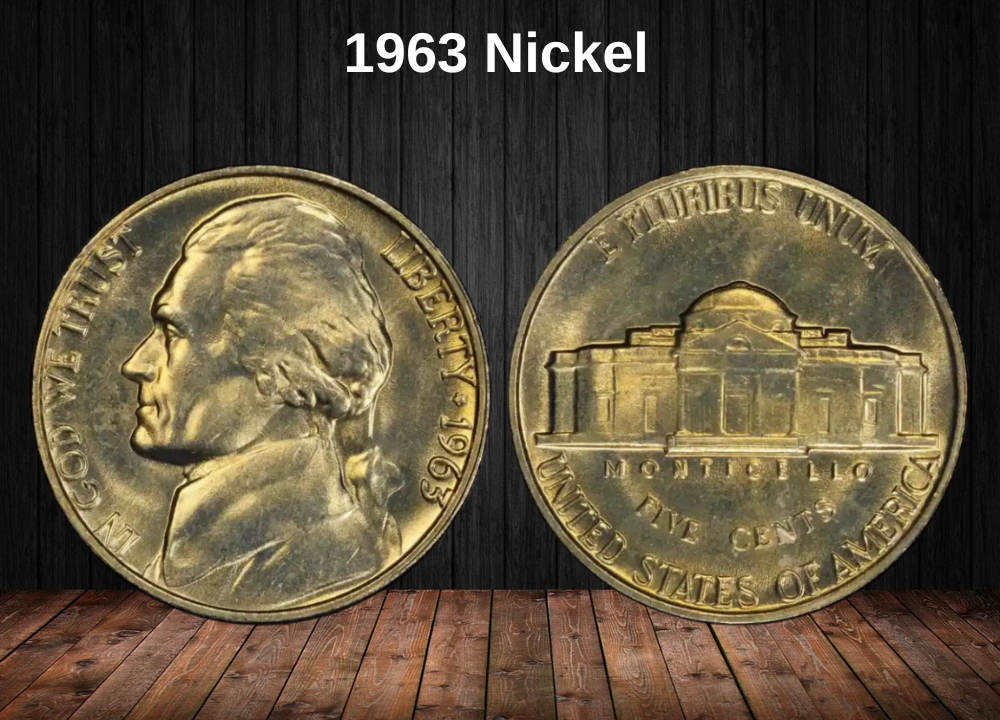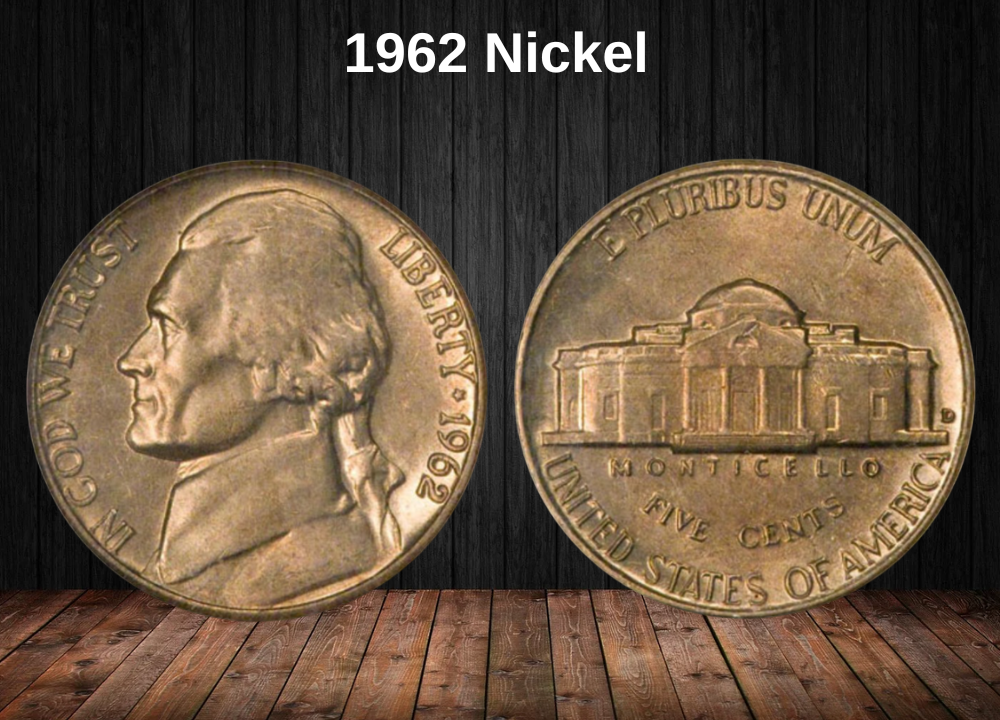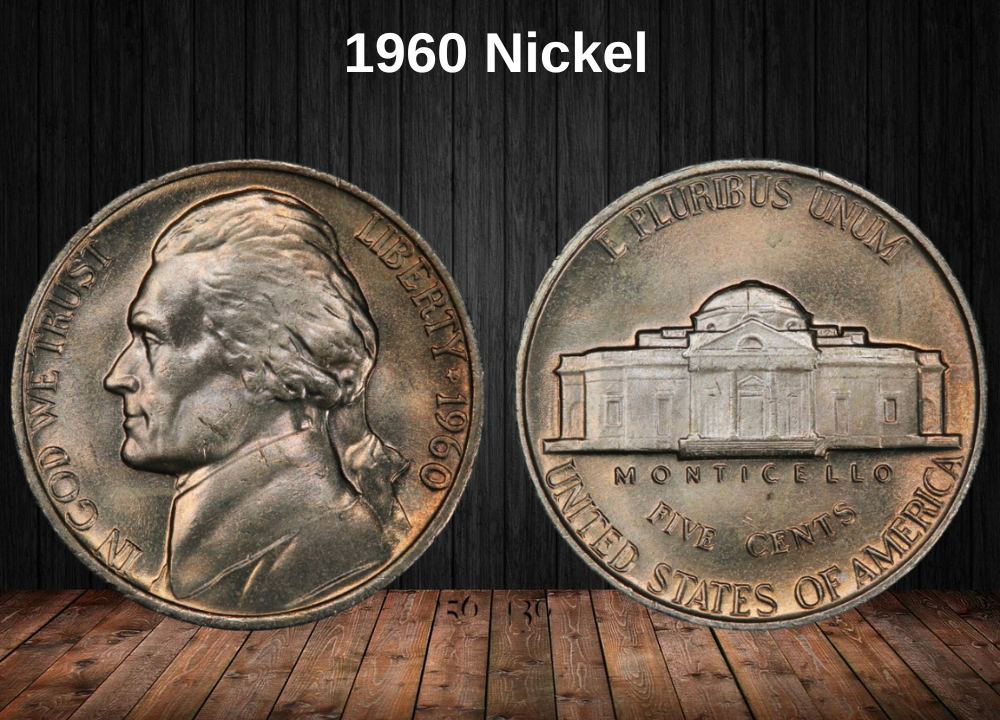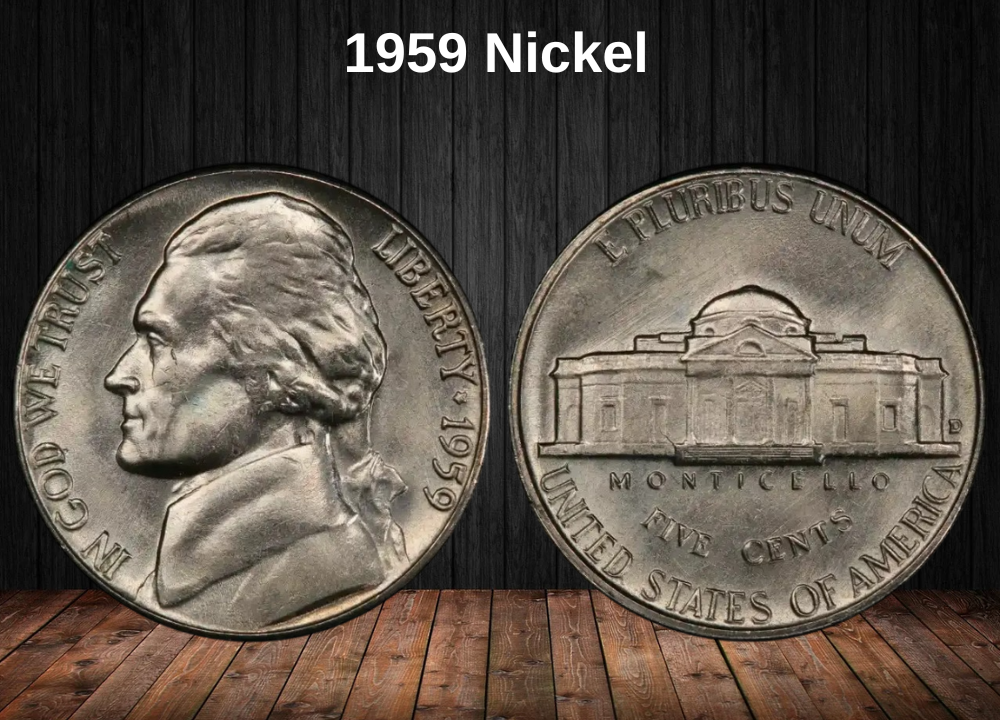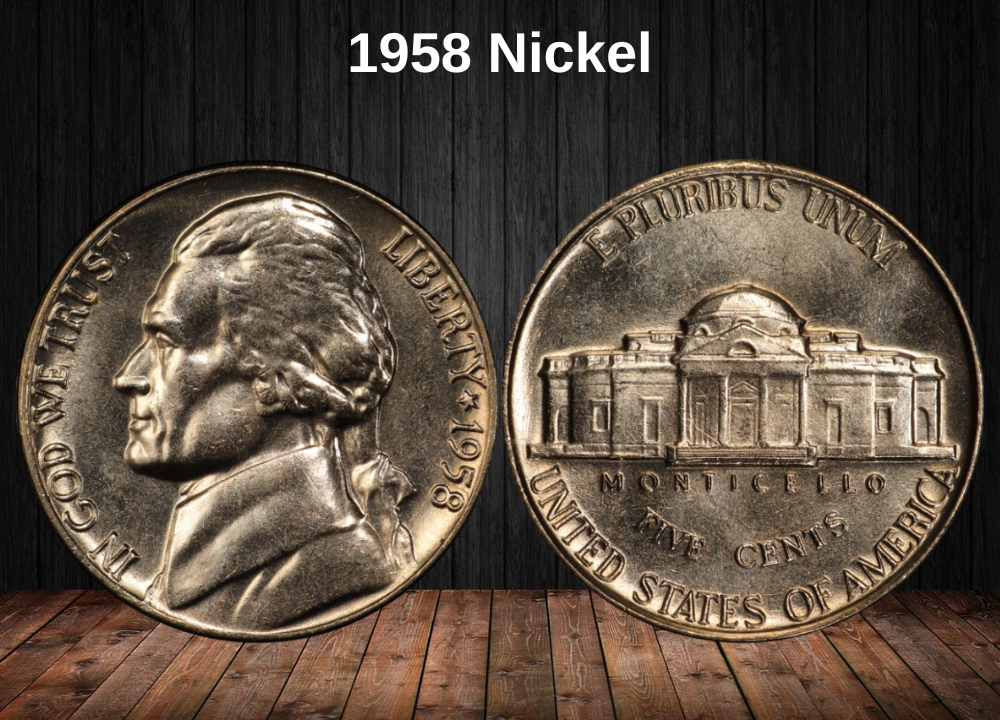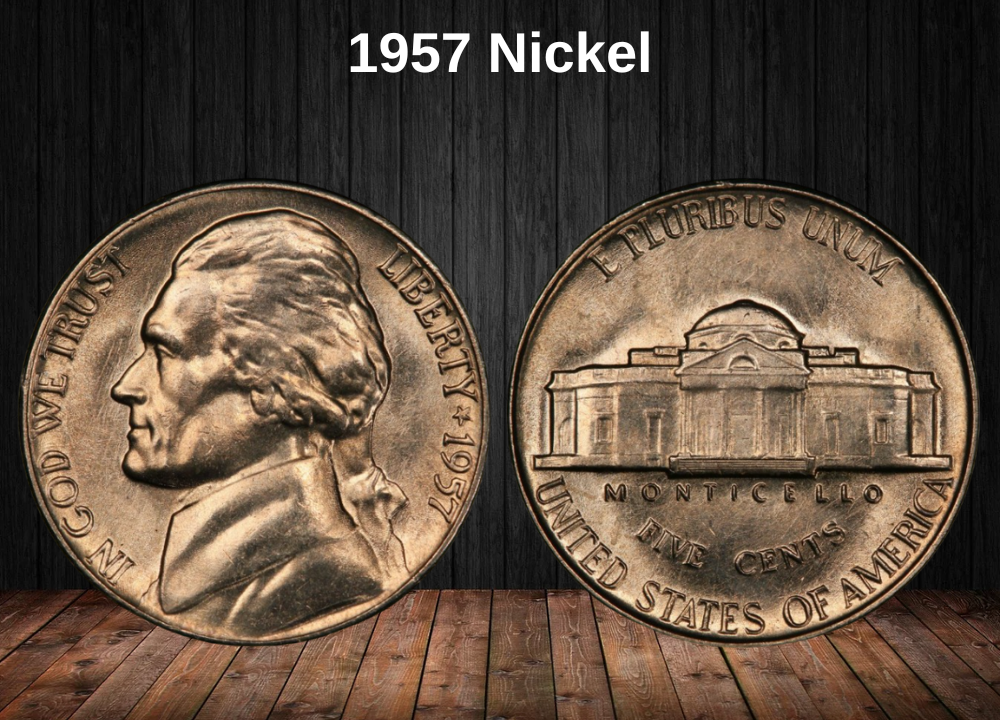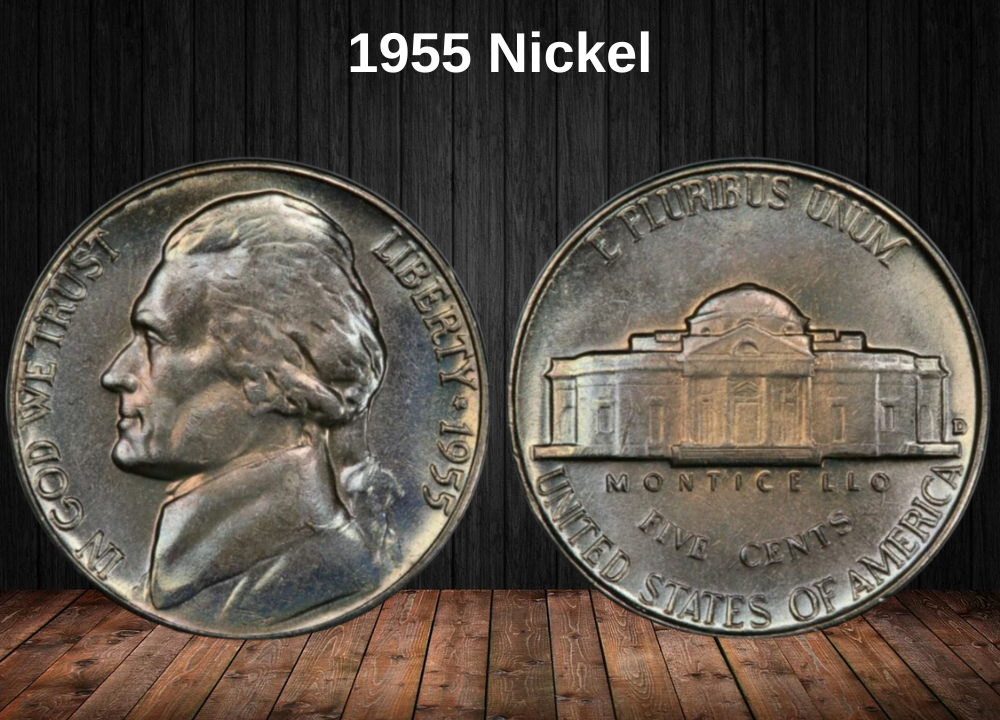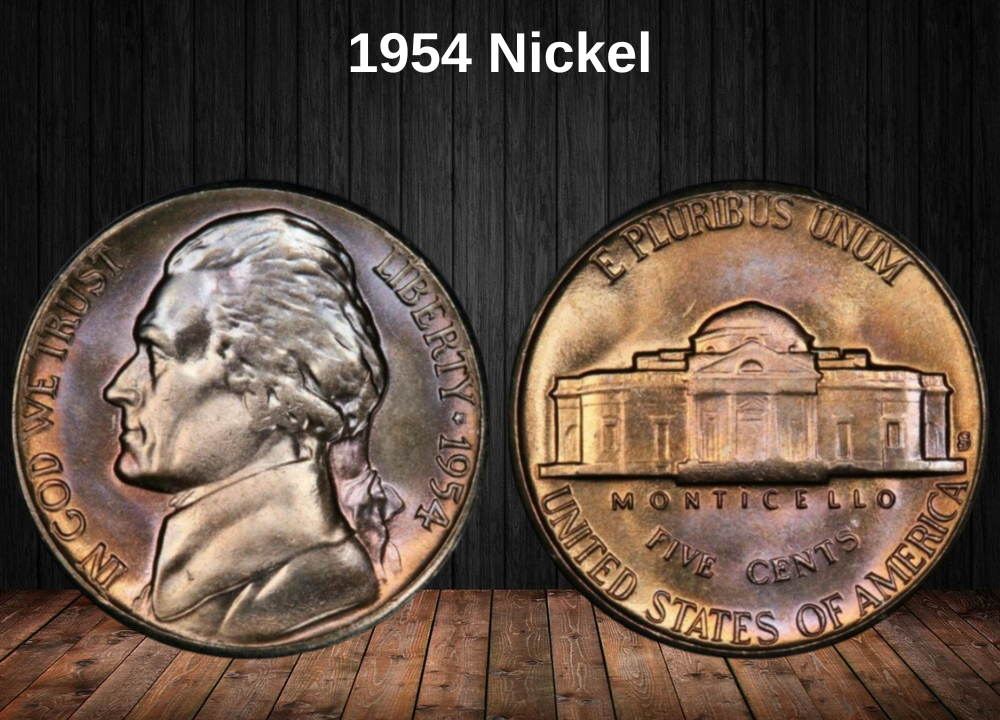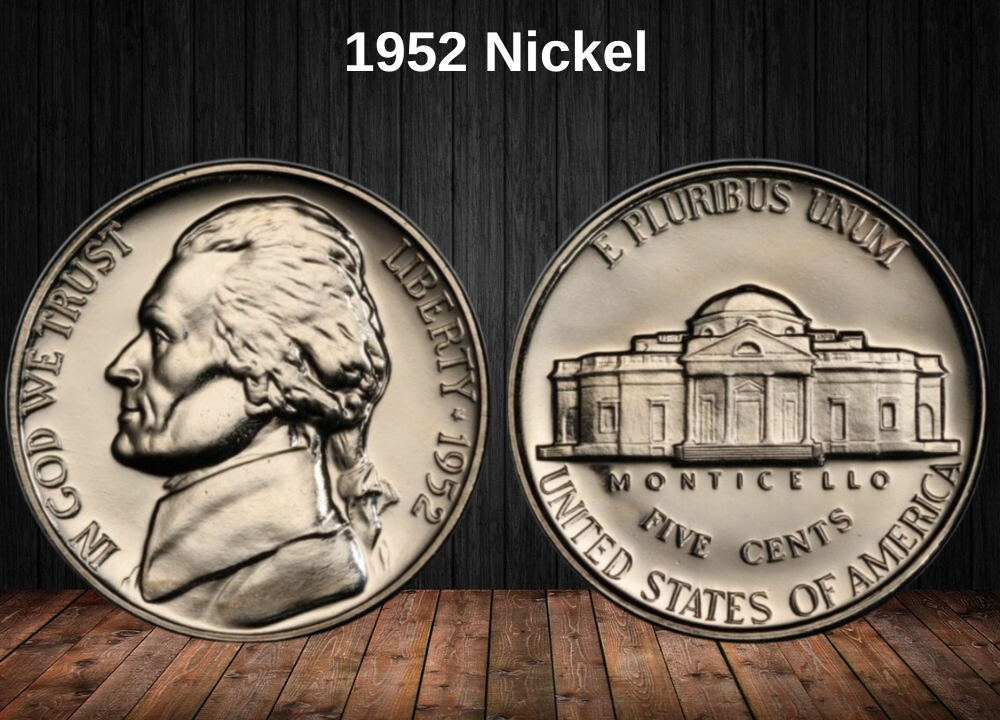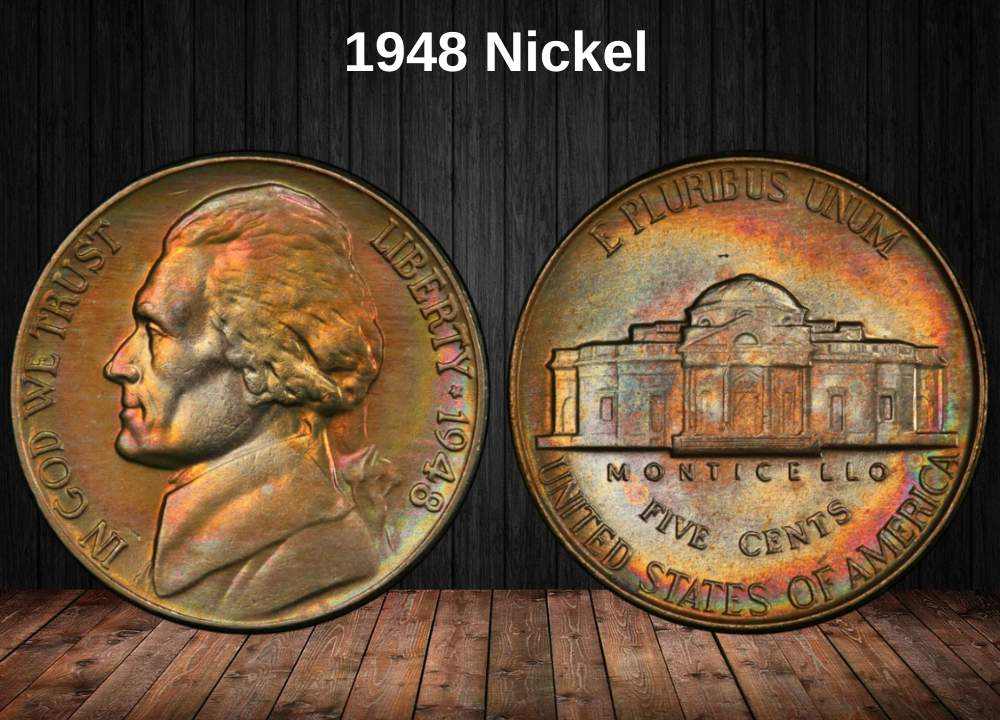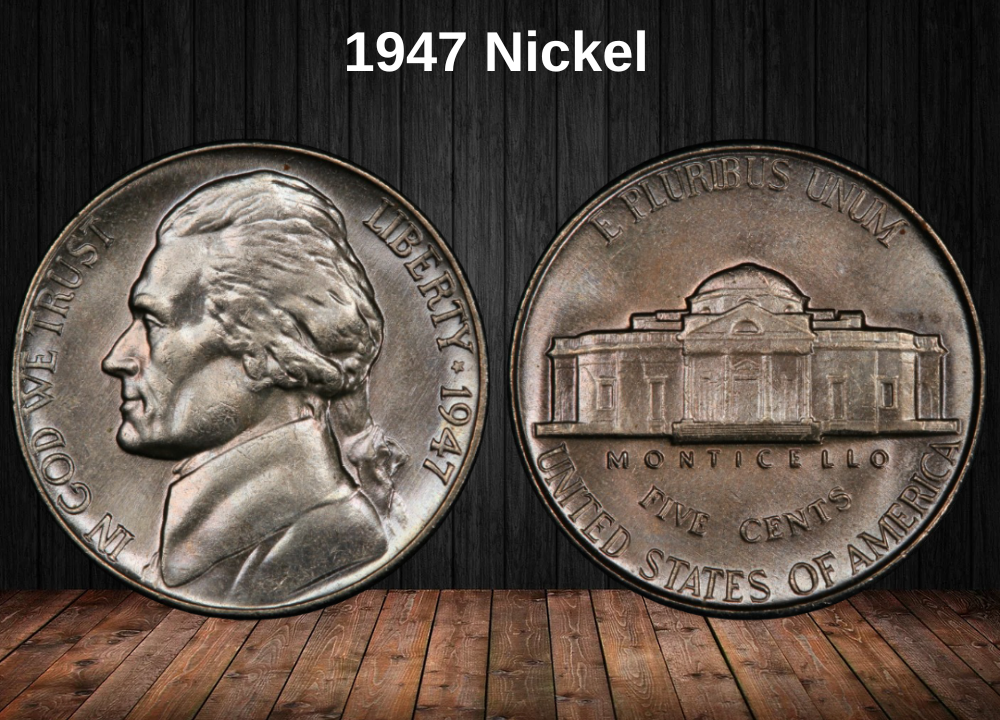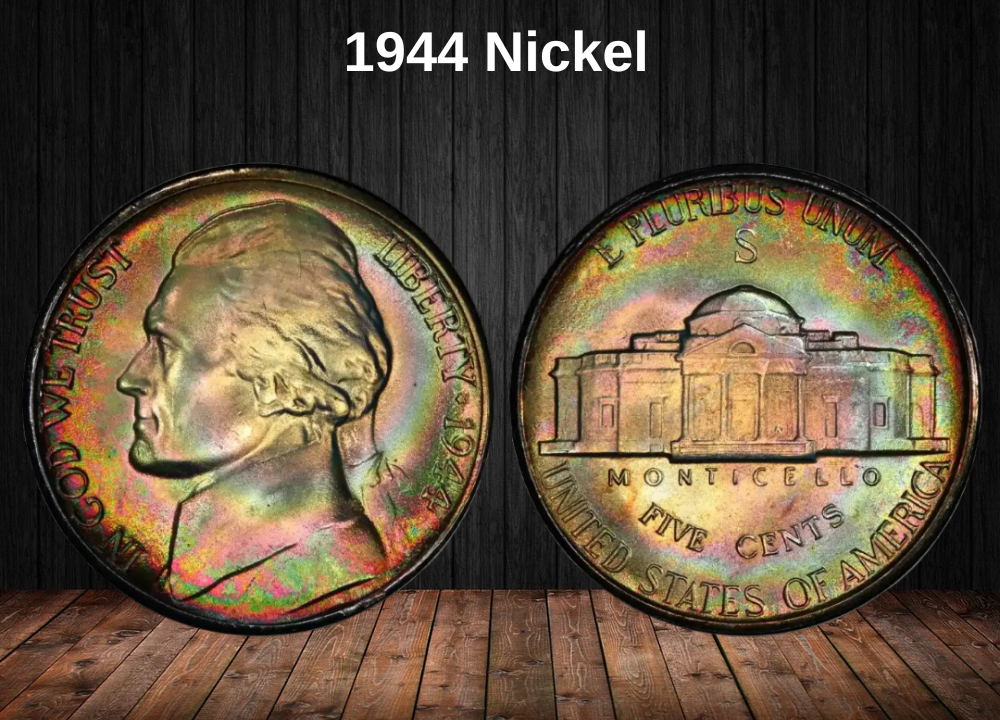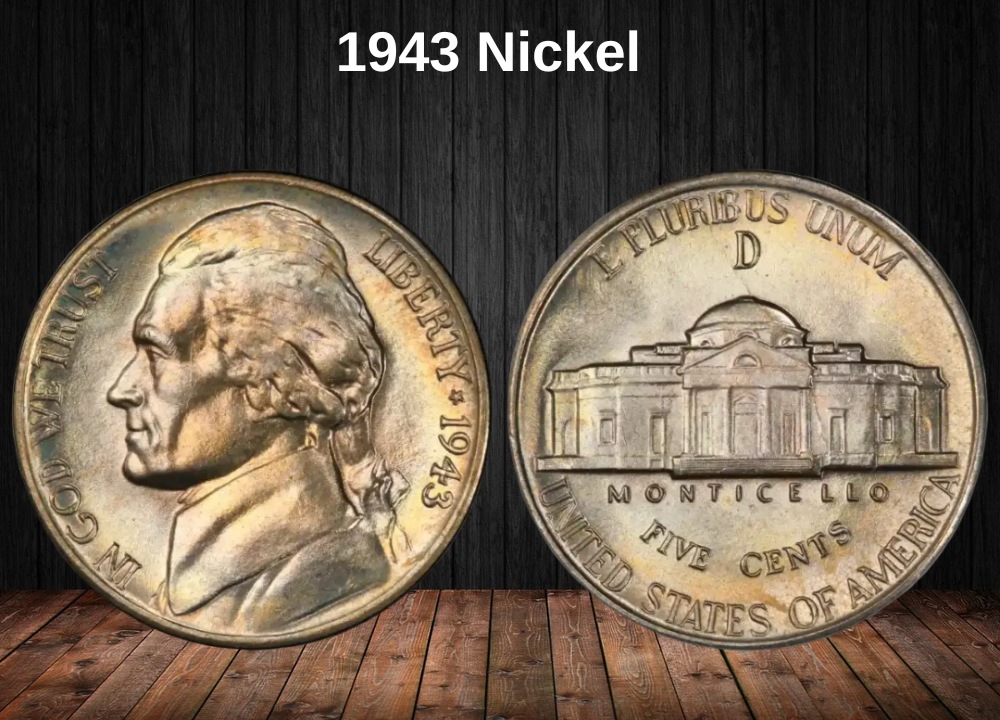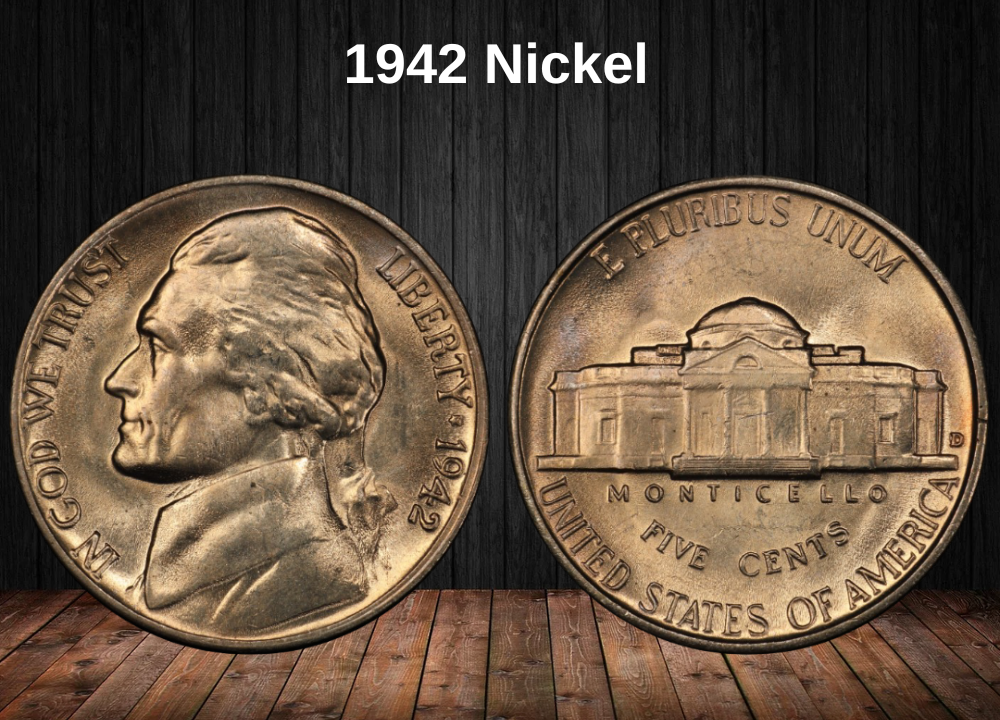Do you already own a 1946 nickel and wonder if it’s worth anything?
You’re in the right place!
This guide was created specifically for collectors eager to understand the true value of the 1946 Jefferson nickel. Not only will you discover how much your coin might be worth, but you’ll also explore the fascinating history, grading tips, and the rare errors that can push a coin’s value into the hundreds of dollars.
So, let’s dive in and find out what makes this post-war nickel truly collectible!
1946 Jefferson Nickel Value Chart
| Mint Mark | Good | Fine | Extremely Fine | Uncirculated |
|---|---|---|---|---|
| 1946 (No Mint Mark) | – | – | $0.48 | $2.44 |
| 1946-D | – | – | $0.48 | $3.54 |
| 1946-S | – | – | $0.54 | $1.84 |
The History of the 1946 Nickel
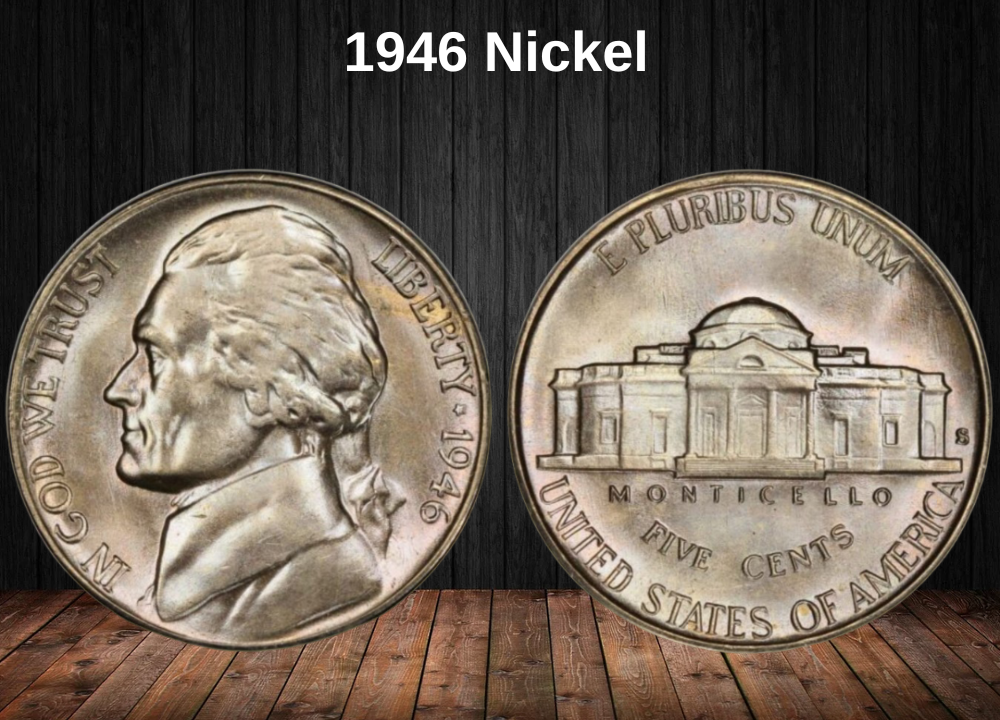
The story of the U.S. nickel stretches all the way back to 1866, when the Shield nickel replaced the silver half dime. However, the modern five-cent piece that we’re familiar with today—the Jefferson nickel—was first introduced in 1938, and it continues to circulate even now.
The idea to redesign the nickel came at a perfect time. The Buffalo nickel, which had been in production for 25 years, was difficult to strike and caused ongoing issues at the Mint. In response, the U.S. Mint held a public design competition to replace it, with the new coin expected to celebrate President Thomas Jefferson, whose 200th birth anniversary was approaching in 1943.
The winner of the design contest was Felix Schlag, a German-American sculptor. His creation featured Jefferson’s portrait on the obverse (based on a bust by Jean-Antoine Houdon) and a depiction of his beloved home, Monticello, on the reverse. The first Jefferson nickels were struck in October 1938 and began circulating by November. Interestingly, many people hoarded them early on, and they didn’t appear widely in circulation until 1940.
During World War II, the U.S. military required large quantities of nickel for weapons and machinery. In response, Congress authorized a change in the coin’s composition. Starting in 1942, nickels were made from a mix of 35% silver, 56% copper, and 9% manganese, temporarily eliminating nickel altogether. These became known as wartime nickels and were the first U.S. coins to feature a large “P” mint mark to represent the Philadelphia Mint.
After the war ended, 1946 marked a return to normalcy. The Mint reinstated the pre-war composition of 75% copper and 25% nickel, and removed the large mint mark above Monticello’s dome. As a result, the 1946 Jefferson nickel is both a symbol of peace and a continuation of an American numismatic legacy.
Features of the 1946 Nickel
The Obverse of the 1946 Nickel
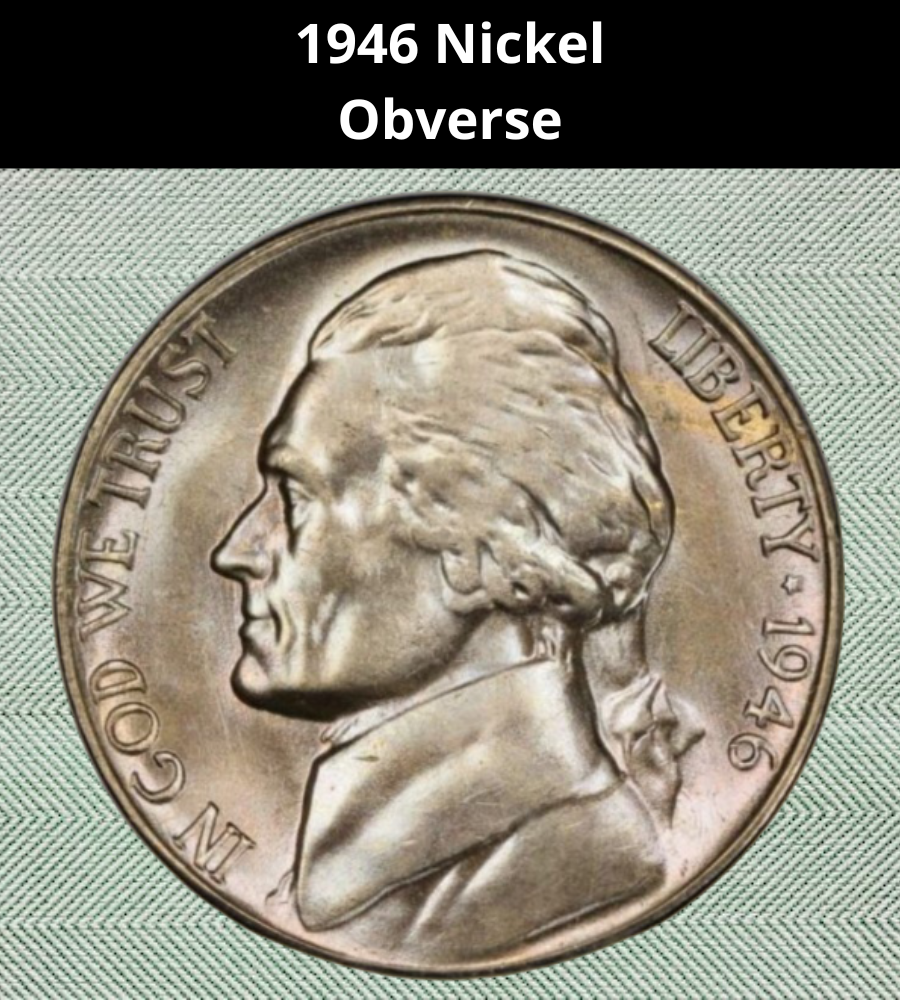
The front side of the 1946 Jefferson nickel features a classic left-facing portrait of President Thomas Jefferson. His appearance is both dignified and traditional, with his hair tied back in a low ponytail, a style reminiscent of the late 18th century.
Running along the left edge of the coin, you’ll find the well-known national motto: “IN GOD WE TRUST.” On the right side, the inscription reads “LIBERTY ✶ 1946,” with a star elegantly separating the two elements. This layout frames Jefferson’s portrait and gives the obverse a balanced and timeless design.
The Reverse of the 1946 Nickel
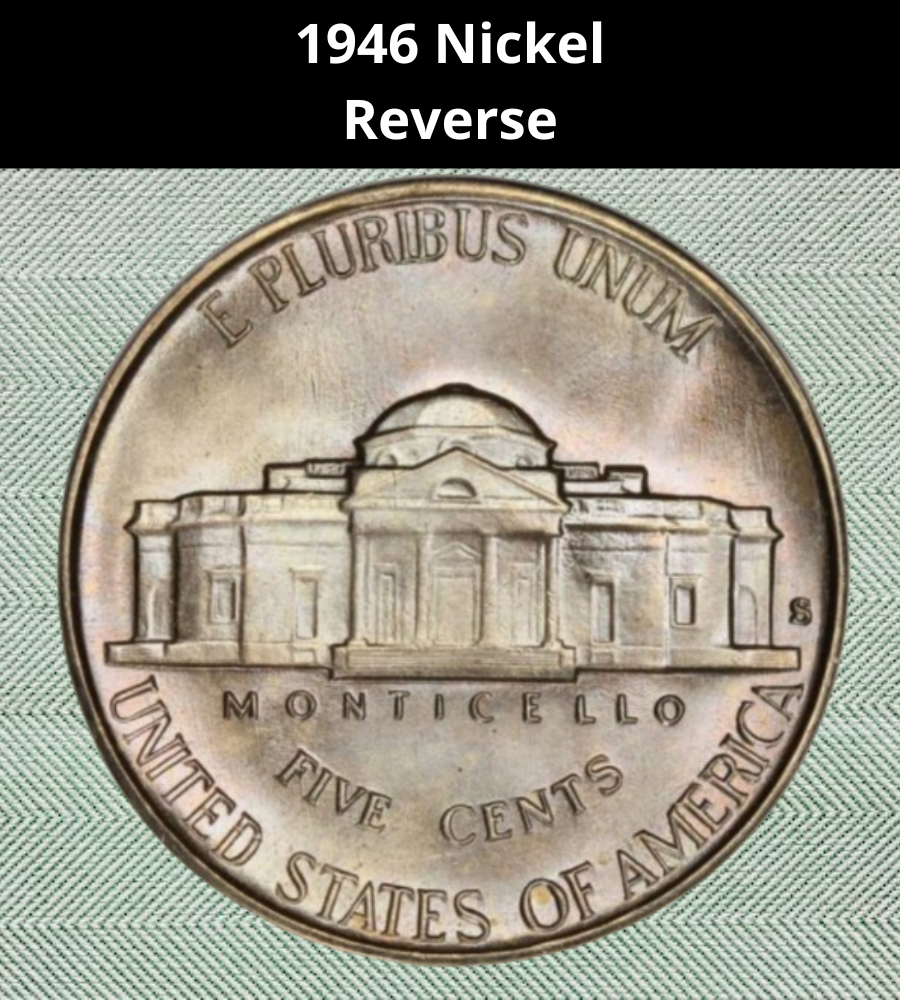
The reverse side of the 1946 nickel showcases a detailed image of Monticello, the historic Virginia home of President Thomas Jefferson. Designer Felix Schlag captured its architectural beauty with precision, illustrating key features like the central dome, roofline, and distinctive staircases, including the wing steps.
Curving along the top rim is the Latin motto “E PLURIBUS UNUM” — meaning Out of many, one. Just below Monticello, you’ll find its name “MONTICELLO”, followed by the denomination “FIVE CENTS”, and finally, “UNITED STATES OF AMERICA” at the bottom edge.
Look closely to the right of the final column on the building — that’s where the mint mark appears, identifying where the coin was struck. If there is no mint mark, the coin was produced in Philadelphia.
Additional Details About the 1946 Jefferson Nickel
The 1946 Jefferson nickel returned to its pre-war metal composition after several years of wartime adjustments. Each coin is made of 75% copper and 25% nickel, which gives it a durable, silvery appearance.
These coins have a plain edge, weigh exactly 5 grams, and feature a diameter of 21.20 millimeters — standard specifications for U.S. nickels.
Production took place at three U.S. Mint facilities:
- Philadelphia (no mint mark)
- Denver (mint mark “D”)
- San Francisco (mint mark “S”)
You’ll find the mint mark — if present — on the reverse side, just beside the rightmost column of Monticello.
1946 Jefferson Nickel Grading Guide
Grading plays a crucial role in determining a 1946 nickel’s true market value, especially for uncirculated specimens, which tend to retain their original luster and exhibit fewer contact marks.
When assessing your coin, focus on surface luster and high points. A well-preserved coin should display a bright, glossy sheen without interruptions. Any dull patches or breaks in luster indicate circulation wear.
Key Areas to Inspect:
- Jefferson’s Hair: This is one of the highest points on the obverse. Look for sharp detail and light frosting—loss of texture or flattening here can reduce the coin’s grade.
- Above the Eye & Around the Collar: These areas often show the first signs of wear. Ensure they remain crisp and free from dulling.
- Monticello Roof Lines & Columns (Reverse): The roof’s triangular lines and the foundation of the building should be clearly visible and untouched by wear. These details fade quickly in lower-grade coins.
- Full Steps Feature: Perhaps the most important aspect for collectors—nickels showing five or six full steps at Monticello’s entrance are far more valuable. Full Steps are typically only found on Mint State (MS) coins and are a strong indicator of a well-struck, high-quality specimen.
Grading Scale Overview:
| Grade # | Grade Description |
|---|---|
| 1 | Basal State-1 |
| 2 | Fair |
| 3 | Very Fair |
| 4–6 | Good |
| 7–10 | Very Good |
| 12–15 | Fine |
| 20–30 | Very Fine |
| 40 | Extremely Fine |
| 50 | About Uncirculated (AU) |
| 60 | Mint State (MS-60) |
| 65 | Mint State Choice (MS-65) |
| 70 | Mint State Perfect (MS-70) |
Tip: Always compare your coin against professional grading references or have it evaluated by a trusted third-party grading service to determine its precise value.
1946 Nickel Value Guides
1946 No-Mint Mark Nickel Value
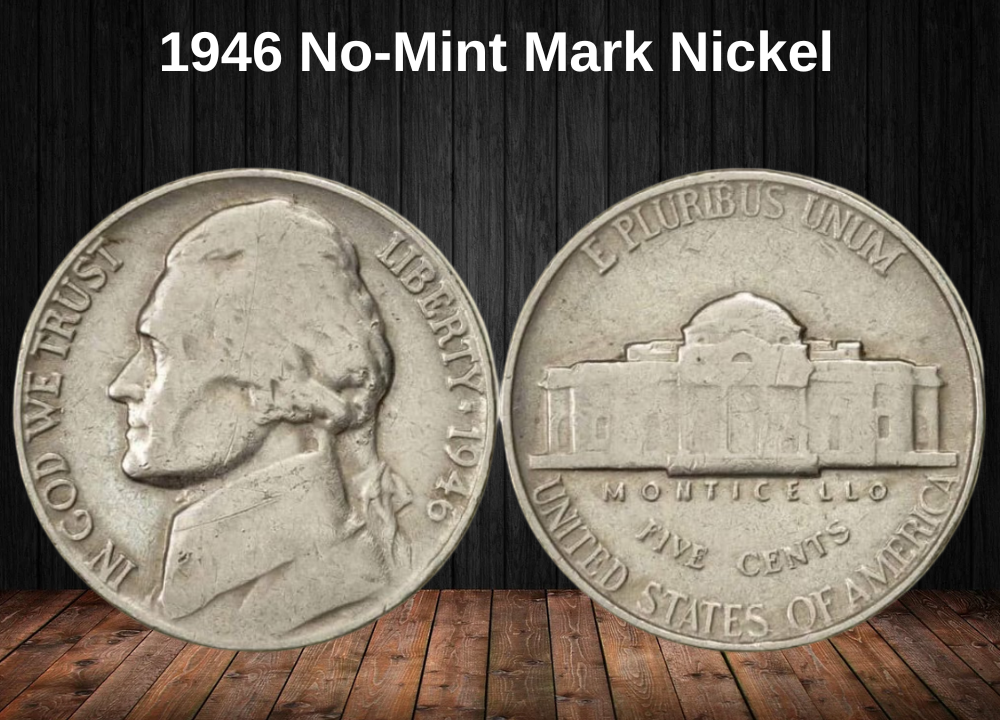
The Philadelphia Mint produced a massive 161,116,000 nickels in 1946, giving this coin the highest mintage of the year. As a result, the 1946 nickel without a mint mark is fairly common and widely available to collectors.
In circulated condition, these coins are typically worth between $0.30 and $1, and up to $18 for higher-end circulated examples. Their value is modest due to the sheer quantity struck.
However, one challenge with 1946 Philadelphia nickels is their notoriously poor strike quality, a common issue with post-WWII coinage. This makes it difficult to find well-struck coins in high grades, especially with sharp details.
Despite this, uncirculated (mint state) examples are still affordable for most collectors:
- MS65 nickels sell for around $24
- MS67 examples can reach up to $750
What truly excites collectors is the Full Steps (FS) designation, which refers to complete, uninterrupted steps on Monticello’s entrance. These are unusual for 1946 nickels from Philadelphia but significantly increase the coin’s value.
- FS nickels graded MS67 have sold for as much as $775
- Rarer specimens can bring up to $1,400, depending on quality and market demand
Pro Tip: If your 1946 no-mint mark nickel shows five or six full steps and is in excellent condition, it may be worth having it professionally graded—you might be sitting on a valuable piece!
1946-D Nickel Value
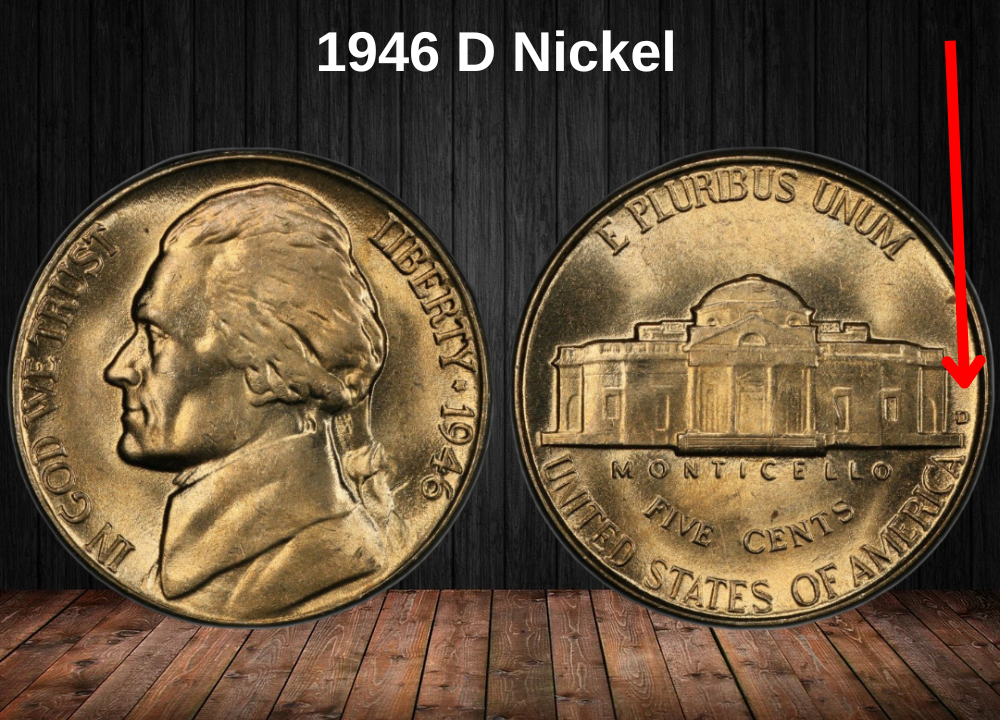
In 1946, the Denver Mint produced approximately 45,292,200 nickels, making it the second-largest mintage of that year.
Unlike the Philadelphia and San Francisco issues, the Denver-struck nickels are known for their stronger strikes and sharper overall detail—a trend that continued well into the 1950s. As a result, collectors often regard 1946-D nickels as the best-looking of the year’s three mint varieties.
In terms of value:
- In circulated grades, a 1946-D nickel typically sells for $0.42 to $14, depending on condition.
- In mint state, prices rise significantly—an MS65 coin can sell for around $450.
For serious collectors, the most desirable examples are those with the Full Steps (FS) designation on Monticello’s stairs. These coins demonstrate a crisp, complete strike and are significantly rarer.
- A typical FS 1946-D nickel can fetch up to $550
- The record price was set in 2006, when a stunning MS67 Full Steps specimen was auctioned by Bowers and Merena for an astounding $8,600
Collector Insight: If you find a 1946-D nickel with clearly defined steps and minimal contact marks, it may be worth getting it certified—high-grade FS examples remain in strong demand.
1946-S Nickel Value
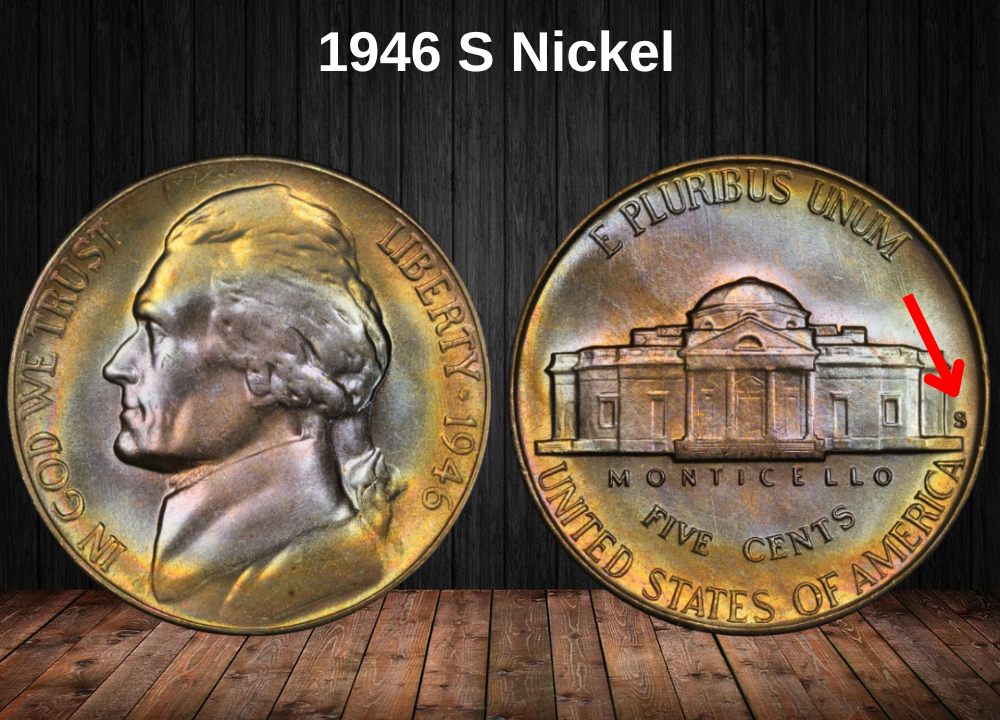
With a total mintage of just 13,560,000 coins, the San Francisco Mint produced the fewest nickels in 1946—making the 1946-S nickel the scarcer variety compared to its Philadelphia and Denver counterparts. You can identify it by the “S” mint mark on the reverse, located near the rightmost column of Monticello.
Interestingly, many of these coins were saved in rolls shortly after being minted, especially in uncirculated condition. As a result, collectors today have access to a relatively good supply of gem-quality and even proof-like specimens.
Adding to their appeal, the 1946-S nickels were struck using improved dies, leading to sharper detail, stronger luster, and better overall eye appeal, even after years in circulation.
Value Overview:
- Circulated condition: Typically worth between $0.48 and $13
- Uncirculated (MS67): Can reach values as high as $215
Collector Tip: While not as common as the Denver or Philadelphia issues, high-grade 1946-S nickels are still accessible and affordable, making them a great target for collectors looking to complete a mint-mark set from 1946.
Rare 1946 Nickel Errors List
1946 Doubled Die Full Steps Nickel Error
While Full Steps are not technically considered minting errors, they are a key indicator of a well-struck Jefferson nickel. In contrast, doubled die errors are true minting mistakes—highly sought after by collectors due to their uniqueness and visual impact.
One notable example from 1946 features doubling in the motto “IN GOD WE TRUST” on the obverse. This type of doubling is rare and collectible on its own, but its value skyrockets when paired with the Full Steps designation on Monticello.
The combination of a doubled die and Full Steps is exceptionally rare, making it one of the most desirable Jefferson nickels from 1946.
Value Overview:
- 1946 Doubled Die with Full Steps: Can sell for up to $900 on the open market
Collector Insight: Keep a close eye on both the motto and the steps under Monticello. The presence of crisp doubling along with well-defined steps could mean you’re holding a premium coin.
1946 Lamination Nickel Error
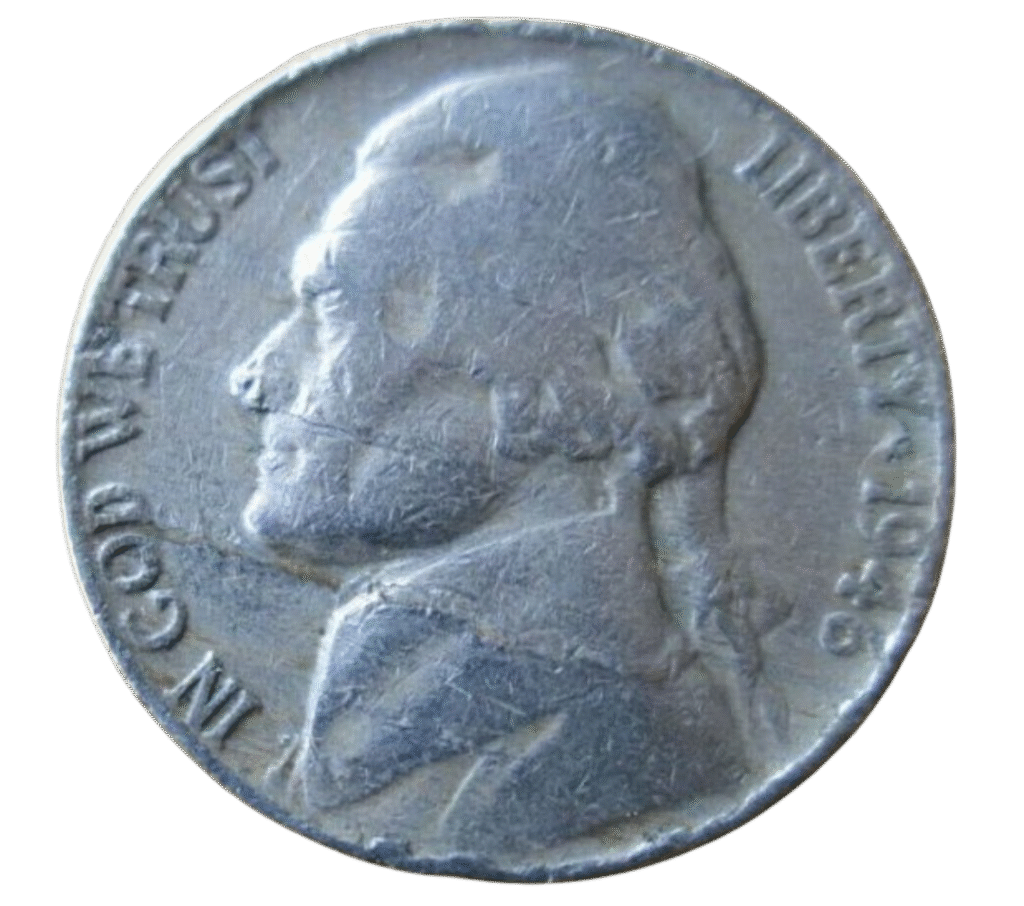
Lamination errors occur when flakes or layers of metal peel away from a coin’s surface due to impurities in the planchet. These impurities cause weak spots that can eventually chip, crack, or flake during or after the minting process.
On 1946 Jefferson nickels, lamination errors are most commonly seen on the obverse (front). While they might look like minor dings or scratches at first glance, these are in fact planchet flaws, not post-mint damage.
Value Overview:
- 1946 Nickel with Lamination Error: Up to $250, depending on severity and visibility
Collector Tip: Carefully inspect the surface under good lighting—true lamination flaws have an uneven, sometimes peeling texture and should not be confused with circulation damage.
1946 Repunched Mint Mark Nickel Error
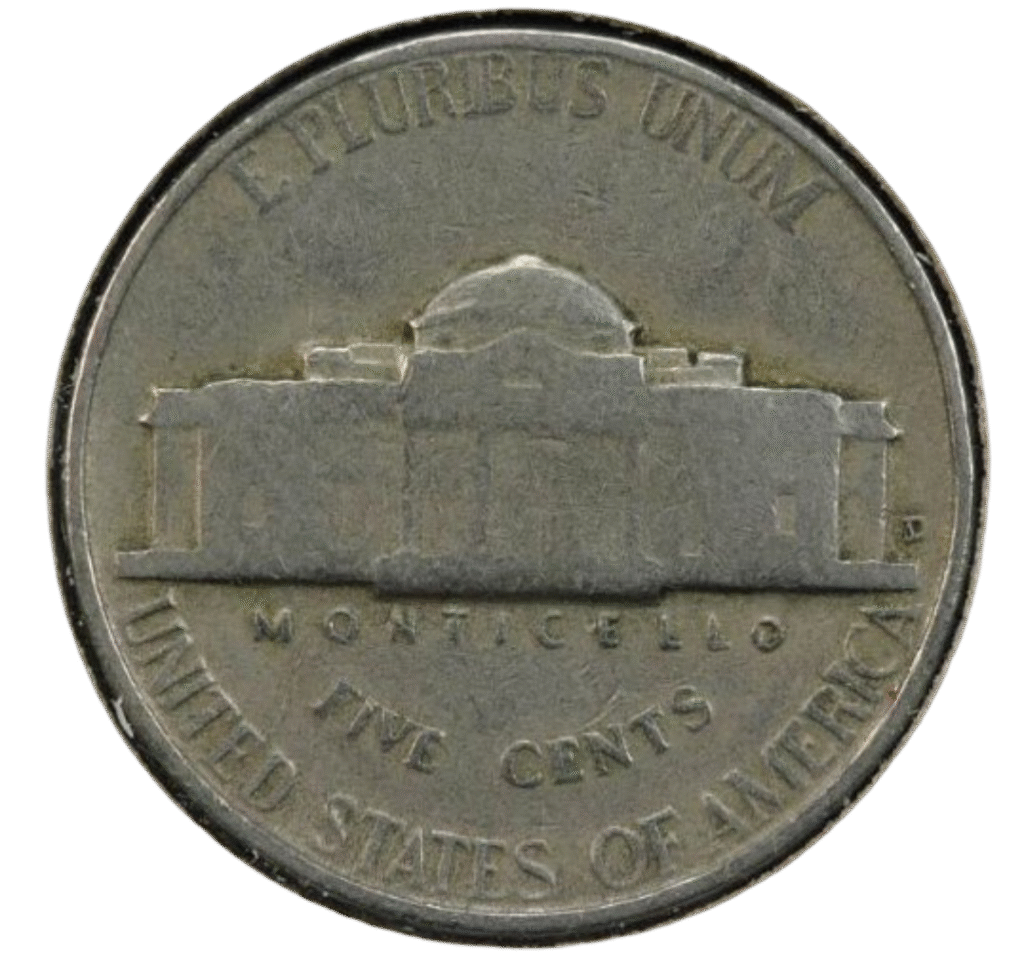
Repunched mint mark (RPM) errors are relatively common among 1940s nickels, particularly those produced at the Denver Mint.
This error occurs when the mint mark—hand-punched during this era—is stamped more than once in slightly different positions. In the case of the 1946-D nickel, a second “D” was punched horizontally over an initial, vertically aligned “D”, resulting in a visibly distorted or doubled mint mark.
Value Overview:
- 1946-D RPM Nickel: Typically worth between $100 and $150, depending on clarity and grade.
Collector Tip: Use a magnifying glass or microscope to spot doubling or distortion in the mint mark, particularly around the edges. Well-defined RPM examples in higher grades can command a premium.
1946 Die Crack Nickel Error
Die crack errors occur when the coin die develops a fracture due to the intense pressure of the minting process. If the damaged die continues in use, molten metal fills the crack during striking, producing a raised, vein-like line on the surface of the coin.
On 1946 Jefferson nickels, die cracks are usually found along Jefferson’s portrait, the lettering, or the Monticello design.
Value Overview:
- 1946 Die Crack Nickel: Valued between $85 and $100, depending on the coin’s location of the crack and overall condition.
Collector Insight: While common in many older coins, clearly visible and dramatic die cracks—especially in mint state—are more desirable and fetch higher prices.
Where to sell your nickel?
Now that you’re aware of your nickel’s value, you may be curious about the best places to sell it. Don’t worry: here’s a rundown of some top online marketplaces where you can conveniently sell your nickels, along with their benefits and drawbacks.
Explore the best platforms for selling nickels online (advantages and disadvantages).
FAQ about the 1946 Jefferson Nickel Value
1. What is the composition of the 1946 Jefferson Nickel, and how does it differ from wartime nickels?
The 1946 Jefferson Nickel returned to the standard alloy of 75% copper and 25% nickel after the silver “war nickels” (1942–1945). As a result, 1946 nickels contain no silver and have lower intrinsic metal value, but are still collectible based on grade, rarity, and mint mark.
2. Which mint marks are used on 1946 Jefferson Nickels, and how do they affect value?
The 1946 nickels were struck at Philadelphia (no mint mark), Denver (D), and San Francisco (S). The “S” mint mark coins are typically scarcer in high grades and may command higher values. The Philadelphia coins are the most common.
3. Are there any valuable errors or varieties in the 1946 Jefferson Nickel series?
Yes. Notable varieties include Repunched Mint Marks (RPM) and die cracks. For example, some 1946-D nickels show a repunched “D” mint mark. There are also examples with die breaks or lamination errors that can increase value depending on visibility and condition.
4. How much is a 1946 Jefferson Nickel worth in circulated vs. uncirculated condition?
Circulated 1946 nickels typically range from $0.10 to $0.75. Uncirculated coins start around $2 to $5, but high-grade Mint State (MS66+) coins or Full Steps (FS) varieties can reach $30–$100+, especially with D or S mint marks.
5. What is the “Full Steps” designation, and why is it important for 1946 nickels?
The Full Steps (FS) designation indicates a sharply struck Monticello on the reverse, with all steps fully visible. This feature is rare for many dates and mints. A 1946 nickel with FS can dramatically increase in value, especially in MS65 or higher grades.
6. Are proof coins available for the 1946 Jefferson Nickel?
No. The U.S. Mint did not produce proof coins from 1943 to 1949 due to World War II and post-war recovery. Therefore, all 1946 Jefferson Nickels were business strikes, making high-quality Mint State examples especially desirable.
7. How can collectors authenticate and properly grade a 1946 Jefferson Nickel?
Authentication involves checking the weight (approx. 5 grams), verifying the correct alloy, inspecting for genuine mint marks, and ruling out cleaning or damage. Grading services like PCGS or NGC can provide certification and identify varieties like Full Steps or RPMs.

